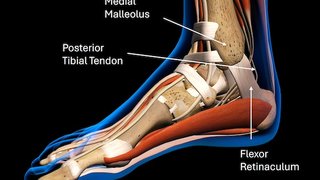Young and hip: Joint preservation surgery may be the long-term answer to hip pain
January 5, 2018

Early onset osteoarthritis occurs for a number of reasons, and traditional approaches like a total hip arthroplasty at a young age is problematic, as total hip arthroplasty is associated with eventual prosthetic failure and activity restrictions. Joint preservation surgery in the young adult with symptomatic hip pain can prevent osteoarthritis progression. At UT Southwestern Medical Center, we’ve begun treating symptomatic hip pain early and correcting aberrant hip mechanics to prevent further degradation of the hip joint and prevent hip replacements.
Hip preservation is the practice of treating pre-arthritic hip conditions and correcting the pathologic mechanics of the hip that lead to early osteoarthritis. At UT Southwestern, we’re emphasizing preservation of the native hip in patients from 14 years of age to adult, rather than replacing the native hip with a prosthesis.
The Bernese periacetabular osteotomy (PAO) – one such hip preservation procedure – is an alternative to address structural deformity and biomechanics of the hip in adolescents and young adults. This surgical procedure involves specific pelvic osteotomies in order to redirect the acetabulum into a more favorable position. In well-trained and skilled hands, the PAO can provide excellent outcomes, preserving the blood supply to the native hip and optimizing coverage of the femoral head while preventing or delaying osteoarthrosis.
The Bernese PAO procedure is a complex and technically demanding procedure that requires extensive training and practice. It utilizes a modified Smith-Peterson approach to realign the hip into an ideal position that can improve static and dynamic instability patterns associated with hip dysplasia. By preserving the posterior column, the procedure results in improved stability of the hemipelvis and protection of the sciatic nerve as well.

Other procedures, such as hip arthroscopy, labral repair, femoral osteotomy, surgical hip dislocation and osteochondral allografts, can be performed at the same time as the PAO, to provide a comprehensive approach to preserve the native joint.
By delaying osteoarthritis, procedures such as PAO can prevent the need for total hip arthroplasty at a young age and preserve normal mobility. When done properly, excellent long-term relief from pain can be enjoyed for more than 20 years, allowing young people to maintain vigorous activity with no limitations.
My training for hip preservation and the Bernese PAO was completed at Washington University School of Medicine and Barnes-Jewish Hospital in St. Louis, where I concentrated on joint preservation, resurfacing, and reconstruction. I now share this knowledge with medical students and residents, because a comprehensive knowledge of the complex hip anatomy and treatment can guide many disorders of the lower body.
UT Southwestern offers a multidisciplinary approach to treating all hip disorders. We have a comprehensive hip team, consisting of musculoskeletal radiology, physical therapy, sports medicine, engineering, and reconstruction. Our physical therapists have specialized training in hip rehabilitation, augmenting patients’ return to their former activities with minimal or no restrictions. We can follow and treat patients as they grow from adolescence to late adulthood and closely track all outcomes.
As part of our work in this emerging area of orthopedics, UT Southwestern has partnered with UT Dallas engineers in establishing a gait lab for wide-ranging hip analysis and a gait study that is currently open for accrual. This study seeks to understand changes in gait biomechanics that lead to osteoarthritis and hip replacement.










